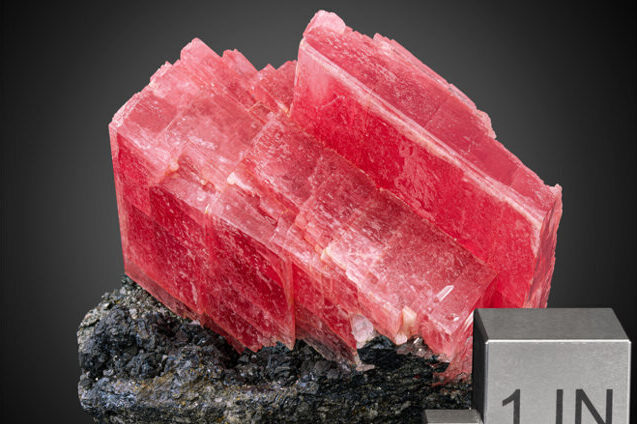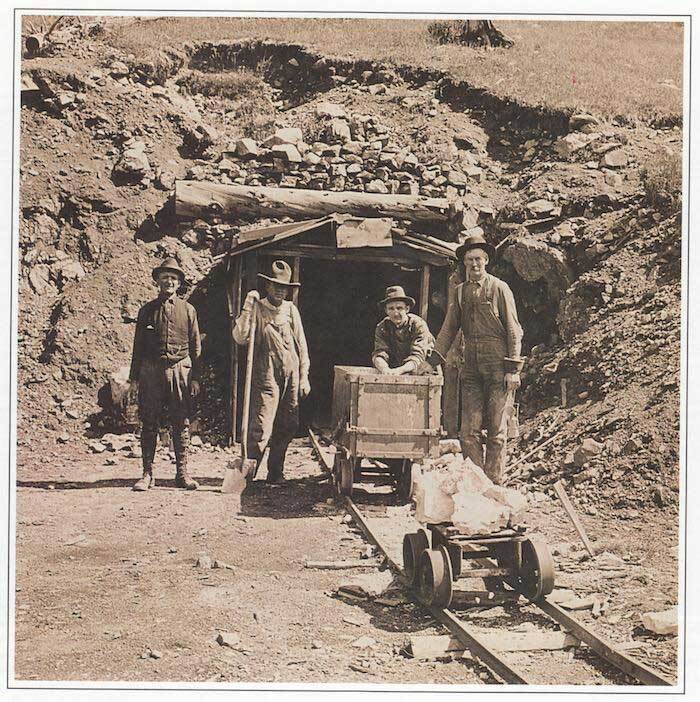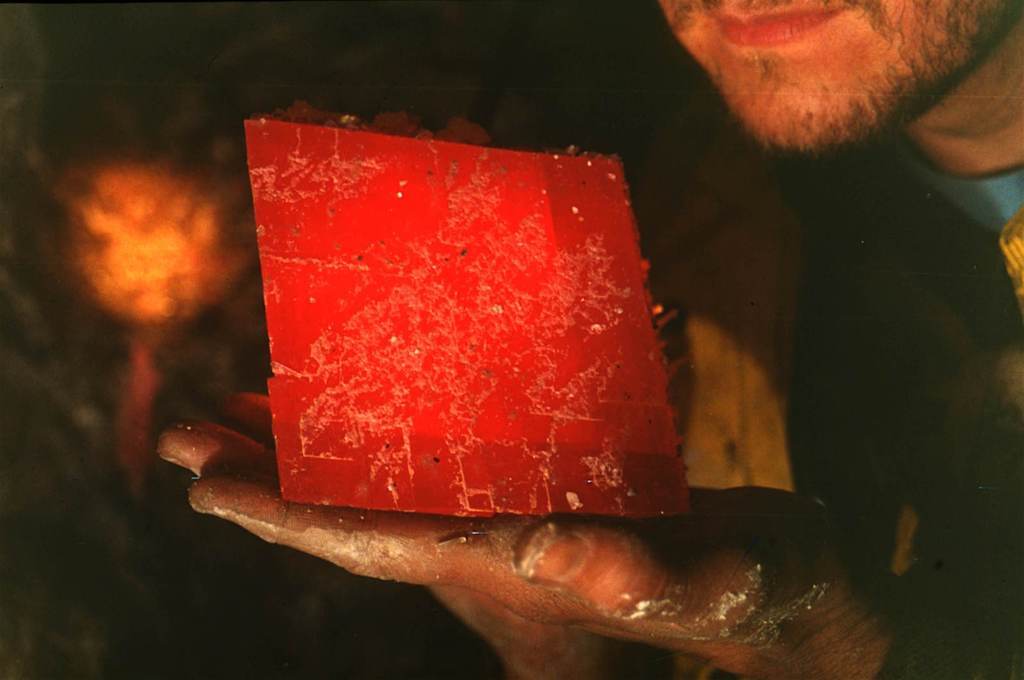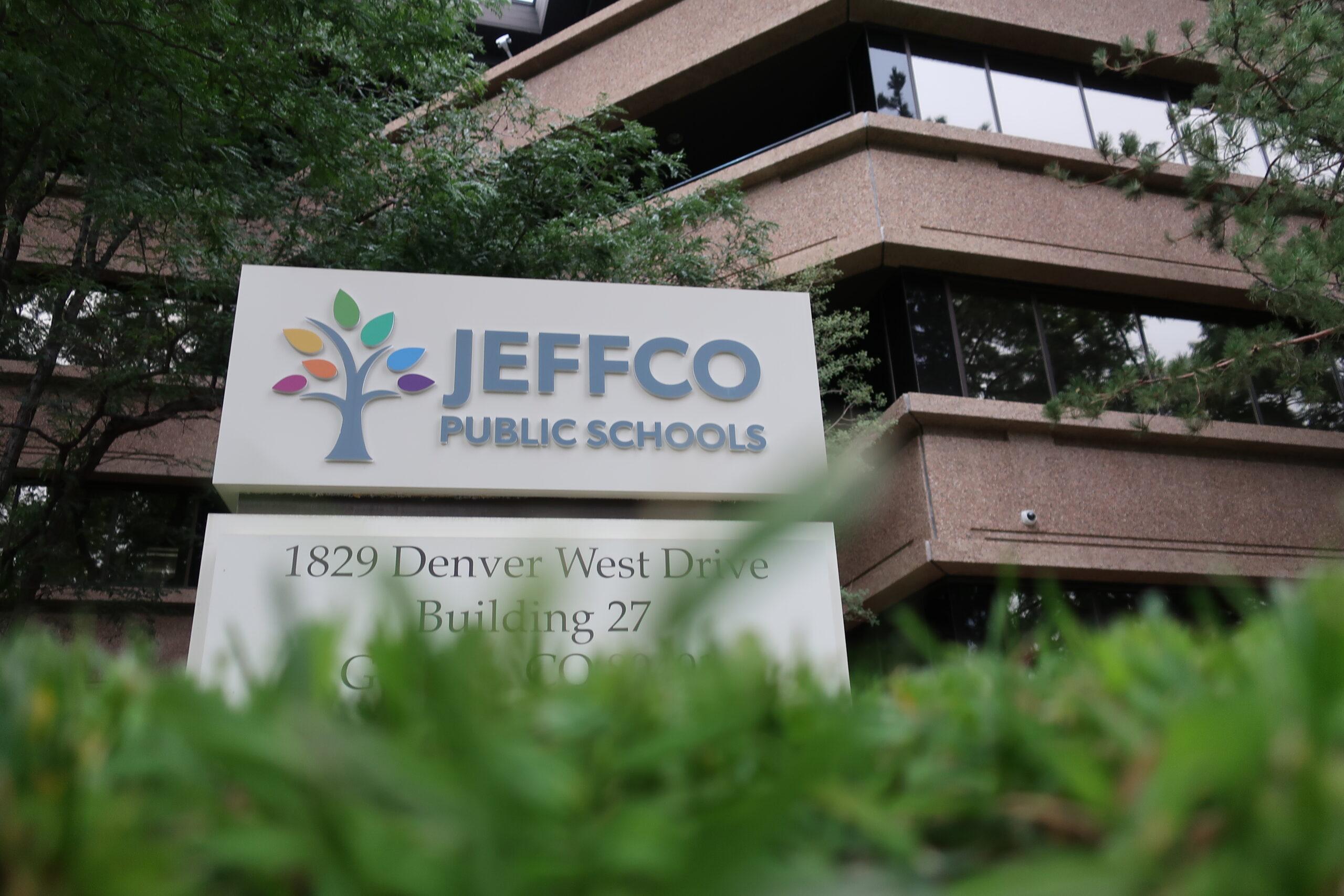
A Colorado gem about the size of an adult’s palm could fetch thousands of dollars at an auction later this month after being on display at the Denver Museum of Nature and Science for years.
Bryan Lees, President of Sweet Home Rhodo Inc., which owns the Colorado Sweet Home Mine, uncovered the specimen in the 1990s while on a make-or-break excavation.
“We were actually broke, and when we went into that pocket, we were trying to figure out how to pay our bills,” he said in a phone interview.
At the time, Lees was leasing the mine in Alma – about 90 miles southwest of Denver – from its three joint owners. Sweet Home originally opened in the 1800s and was part of the Colorado Silver Boom, but when the price of the metal collapsed in 1893, the mine shut down.
It remained shuttered until 1922, when local entrepreneur Edwin Spray became a major shareholder and reopened it for additional silver mining. Spray hoped to capitalize on the metal’s rebounding value, but the mine would instead become famous for producing pristine minerals.
The shift happened after Sweet Home miners uncovered a unique pocket of rhodochrosite in 1925. The crystal forms in cubes and ranges in color from pink to deep red. While the mineral species was already known in the geology world, it was generally considered a low-value mining byproduct, something Lees says the miners would carry out in their lunchboxes as a souvenir. The newly uncovered Sweet Home pocket, however, contained specimens of extremely high quality that changed the way collectors viewed the formations.
“The ones in Colorado are this really gorgeous, saturated, I like to call watermelon color,” said Tama Higuchi, a fine minerals specialist at Heritage Auctions, which will host the bidding for the upcoming sale.

According to Colorado School of Mines, rhodochrosite’s name is of Greek origin and translates to “rose color” – “rhodos” meaning rose and “khros” meaning color.
“One of the reasons it's so desirable is because of that color. The color red is the most exciting color to a human eye,” said Lees.
When Edwin Spray and his wife died, the mine went to their nephew, who leased it to John Soules of Texas. Then, in the mid 1960s, Soules and his team found another pocket of rhodochrosite with crystals of higher quality and size, including a specimen known as the Alma Queen.
“The quality is rarely seen except for out of this mine and maybe one place in South Africa,” Higuchi said.
After seeing the Queen on display at a mineral show in the 1970’s, John Patrick, one of the world’s premier mineral collectors and authorities of the time, described it as the “finest mineral specimen in the world.”
The discovery added to the reputation of the mine, making Colorado famous as the home of the world’s best rhodochrosite. The Alma Queen was valued at $250,000 in 1990, shortly before Lees took over the mine, and now resides at the Houston Museum of Natural Science.
Lees was hopeful he’d find another specimen akin to the Queen, and in 1992, he did. On that make or break excavation, he and his team uncovered the largest specimen of rhodochrosite the mine has ever produced. Dubbed the Alma King, the gem he found is a giant ruby red square about the size of a football.
“The Denver Museum was on site with us that day, making a documentary about mineral mining in Colorado. We did the blast, and they said, ‘Well let’s see if you got anything.’ So that footage of me pulling out the Alma King at the museum, it’s real. People think it’s staged, but that was the actual discovery,” he said.

The Coors Foundation eventually bought the crystal and donated it to the Denver Museum of Nature and Science, where it remains on display today alongside the video of Lees extracting it. Visitors remark that it looks like a giant piece of candy.
Lees says for him, pulling the Alma King out of the crevice was like Christmas morning.
“You could see dozens of red crystals shining back at you,” he said.
The current rhodochrosite specimen going up for auction was also on display at the museum for a time. Heritage Auctions expects it to sell for anywhere between $10,000 and $20,000.
“We changed the price of minerals in general with [the Alma King's] discovery,” said Lees. “It was a bit like the tide that raises all boats.” The discovery also led Colorado lawmakers to names rhodochrosite the state mineral.
Lees opened the Sweet Home Mine one final time in 2016. Miners tapped the same vein system where the Alma King originated at a higher level. They found a few more rhodochrosite pockets in 2018, but nothing as spectacular as the Alma King.
The mine officially closed once again on Sept. 3, 2024, with Lees pulling the last of the mining gear out just a few weeks ago. He describes the upcoming sale as the end of an era.
“There will probably not be any more [rhodochrosite] from the area,” he said.
Higuchi with the auction house says the watermelon color that the Sweet Home Mine is known for is incredibly rare. It’s what makes the upcoming auction on Oct. 18 so special.








